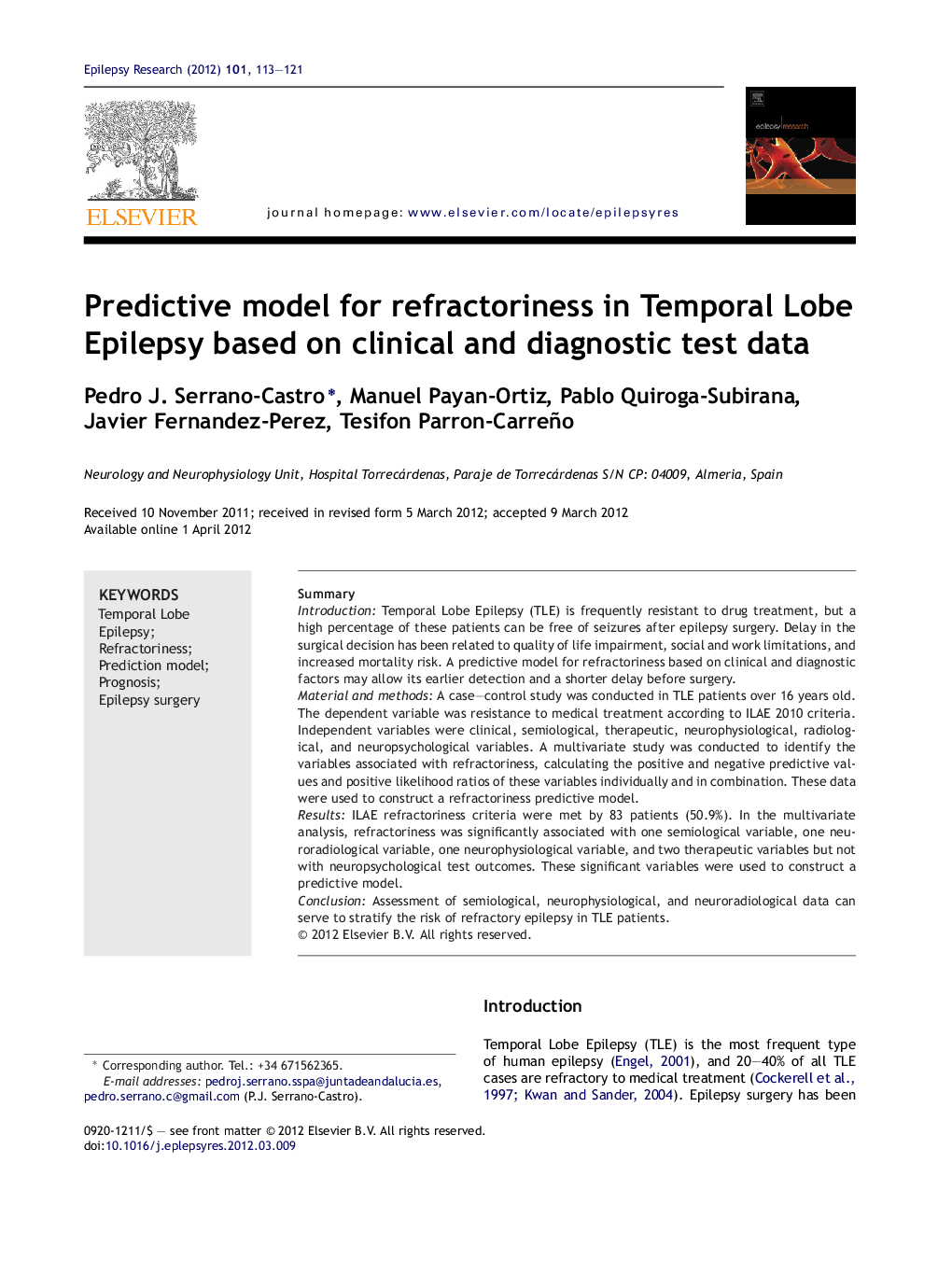| Article ID | Journal | Published Year | Pages | File Type |
|---|---|---|---|---|
| 3052199 | Epilepsy Research | 2012 | 9 Pages |
SummaryIntroductionTemporal Lobe Epilepsy (TLE) is frequently resistant to drug treatment, but a high percentage of these patients can be free of seizures after epilepsy surgery. Delay in the surgical decision has been related to quality of life impairment, social and work limitations, and increased mortality risk. A predictive model for refractoriness based on clinical and diagnostic factors may allow its earlier detection and a shorter delay before surgery.Material and methodsA case–control study was conducted in TLE patients over 16 years old. The dependent variable was resistance to medical treatment according to ILAE 2010 criteria. Independent variables were clinical, semiological, therapeutic, neurophysiological, radiological, and neuropsychological variables. A multivariate study was conducted to identify the variables associated with refractoriness, calculating the positive and negative predictive values and positive likelihood ratios of these variables individually and in combination. These data were used to construct a refractoriness predictive model.ResultsILAE refractoriness criteria were met by 83 patients (50.9%). In the multivariate analysis, refractoriness was significantly associated with one semiological variable, one neuroradiological variable, one neurophysiological variable, and two therapeutic variables but not with neuropsychological test outcomes. These significant variables were used to construct a predictive model.ConclusionAssessment of semiological, neurophysiological, and neuroradiological data can serve to stratify the risk of refractory epilepsy in TLE patients.
